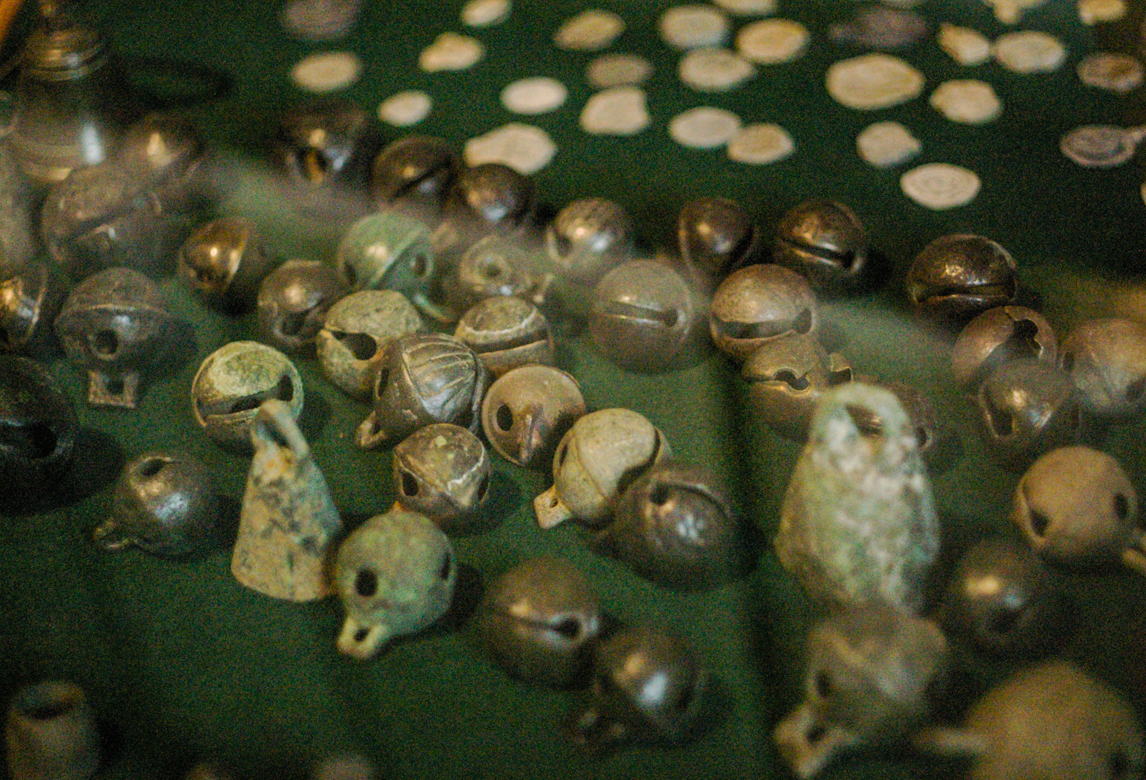The practice of putting bells on one’s sheep is no longer widespread in the UK, however there is some evidence that it was once much more popular in the UK than it is today, and sheep bells still seem to be used in other parts of Europe. The sounds of sheep bells featured in a podcast by TEAM WOVEMBER member, Felicity Ford, and we would be very keen to hear from shepherds about why you do/don’t think it is a good idea to keep bells on your sheep.
And here the sea-fogs lap and cling
And here, each warning each,
The sheep-bells and the ship-bells ring
Along the hidden beach.Kipling: Sussex by the Sea
Barclay Wills describes the same practice on the Sussex Downs, where sheep bells were especially useful to keep track of sheep inclined to stray in the heavy mists of the region, but for the Downland shepherd as for his French counterpart, the bells were also used for the sheer pleasure of their music.
[youtube https://www.youtube.com/watch?v=tyuQZObtg4E&w=560&h=315]
Bells came in many shapes and sizes and were chosen with care. There were canisters and cluckets made of iron and plated with brass, and wide-mouthed iron bells. The note and pitch of these bells was an accident in the making, not intetional, indeed a bell might have two notes as the clapper struck both sides as the sheep moved. Cup bells were made of bell metal and were deliberately made in tune, whilst lattern bells were originally part of sets of harness. Crotals or rumblers were spherical shells with a slit and a round ball of metal loose inside – rather like a bigger version of a cat bell.
Dee Duke & Rowena Edlin-White, Woolgatherings for dyers and spinsters, A Shepherd’s Miscellany, No. 9, published in Nottingham, 1996
Beautiful sheep bell collection at the Woollen Mill at Filkins, photo © Felicity Ford
